Shoulder and Elbow Injuries Related to Motocross Biking - 5 Year Review
Rohit Singh*, Rohit Dhawan, Maulik Gandhi and Stuart Hay
Trauma and Orthopaedics SPR, Robert Jones Agnes Hunt Oswestry Orthopaedic Hospital
*Address for Correspondence: Rohit Singh, Trauma and Orthopaedics SPR, Robert Jones Agnes Hunt Oswestry Orthopaedic Hospital, UK, Tel: +016-914-040-00; E-mail: [email protected]
Submitted: 14 September 2017; Approved: 22 September 2017; Published: 25 September 2017
Citation this article: Singh R, Dhawan R, Gandhi M, Shoulder and Elbow Injuries Related to Motocross Biking - 5 Year Review. Int J Sports Sci Med. 2017;1(2): 044-047.
Copyright: © 2017 Singh R, et al. This is an open access article distributed under the Creative Commons Attribution License, which permits unrestricted use, distribution, and reproduction in any medium, provided the original work is properly cited
Download Fulltext PDF
Background
The ever-growing popular sport of motocross is practiced by millions of people throughout the world, but there is paucity in the literature regarding its associated injuries and their prevention. Motocross is a very established sport that has been practised competitively for over 100 years. It is a form of motorcycle racing held on established off-road circuits. The first competitions dated back to 1906 [1,2], and has now become a worldwide fashionable celebration, with the sport becoming more alluring with its commercial attractiveness and availability [1,2]. The first competitive motocross event in the United Kingdom took place at Camberley, Surrey in 1924 [3]. There are currently over 200 motocross clubs across the country, permitting almost 1000 annual events [4].
The age groups for competition range from 6 years for boys and girls to the age of 65 years. Nonetheless, it has been reported that children at the age of 3 years have been taking part in motocross competition [5]. The motocross bikes that are currently attainable are remarkably impressive and can reach speeds of approximately 100mph and weigh approximately 150 kilograms [1,3-5]. The sport of motocross is practised all year round with seasonal peaks between March and October [4]. The competitions occur during the weekends with approximately 200 racers per race. The attainment of a motocross license is via an online application with modest fees of one-hundred-and-fifty-pound sterling. The financial burden is favourable in comparison to other motor vehicle sports [6,7]. Injuries to the shoulder and elbow are common place when compared to most competitive contact and non-contact sports. The distribution and severity of shoulder and elbow injuries related to motocross is not known. Given that no studies have been published to date exploring the relationship between motocross sporting events and the associated shoulder and elbow injury patterns, this study was designed prospectively to review our experience and quantify those observations. We therefore present the first comprehensive, prospective study of its type in the UK.
Method
Data was prospectively collated over 5 (from 2010 to 2015) years at our trauma unit. All injuries caused by motocross vehicles that were referred to our Trauma and Orthopaedic department were included in this study, regardless of whether the rider was performing motocross competitively or recreationally (training). Patients were either seen acutely in the emergency department or subsequently in the fracture clinic. We specifically looked at motocross riders only. Injuries sustained whilst off Road Mountain biking, or via motorcycle road accidents, were excluded from our study. The information received included basic details (name, age, and sex), the type of injury sustained, the need for admission/surgery, and any associated complications. The information was prospectively collected form dictated hospital notes (inpatient and outpatient) from Trauma and Orthopaedic consultants and specialist registrars in our department. Results were tabulated using an excel spreadsheet (Microsoft, Redmond, Washington).
Results
During the period studied (five years), 615 injuries were collected, including 205 patients with 240 shoulder/elbow injuries (ranging from 1 - 4 per patient). The study period was from August 2010 to August 2015. The greater number of injuries occurred in patients engaged in the sport for competitive purposes as opposed to recreational. The vast majority of injuries were sustained in male patients (n = 185, 90%) (Figure 1). The patient’s age range was from 4-78 years, but the main cohort was from 12-54 year age group, with the majority in the 11-20 year age group (Figure 2). Most of the injuries occurred in early spring and summer months. March and April had the highest number of injuries (Figure 3). This would represent the start of the competition season, where riders may be more susceptible after the winter discontinuity with regard being unacquainted to the hazardous ground and ‘rusty’ in terms of skill level. There is a noticeable peak again during the transition between autumn and winter where we suspect the course will be more treacherous as the weather becomes more precarious. A total of 100 (42%) patients required operative treatment (Figure 4), some requiring multiple procedures (2 or more procedures) with a prolonged hospital stay of 5 of more days (n = 52, 12%). The spectrum of shoulder and elbow injuries is shown in figure 5. The most common injury pattern was clavicle fractures (n = 46, 19%), followed by elbow dislocations (n = 24, 10%) and olecranon fractures (n = 23, 9.5%). 120 (50%) of patients required inpatient hospital stay. The length of hospital stay ranged from 1 day to 10, with the majority staying in hospital for 2 days. 10 patients required admission to HDU/ITU and further 20 required transfers to specialist centres for complex associated chest injuries. All local patients required at least two follow up appointments, regardless of whether their treatment was operative ornon-operative. During the 5 years that this study has been conducted, we have seen a steady rise in the number of injuries (Figure 6). There has also been a rise in the number of operations in the treatment of motocross injuries (Figure 7). In the first year of the study, there only 4 operations required compared to 48 in the fifth year.
Discussion
This is the first study of this magnitude in the UK showing the spectrum and frequency of shoulder and elbow injuries related to motocross racing. Motocross is a fashionable sport both in the UK and worldwide, with the number of yearly tournaments and racers doubling in last 5 years [2,3]. It is recognized as a high-risk sport despite the use of protective equipment and course adoptions. The injuries from these competitions result in a serious strain on hospitals, despite safety precautions. The safety measures include on-site security management, local authority liaison, crowd protection, fire safety, safe working practice documents and pedestrian management solutions [8-11]. It is interesting to note that 90% of injuries documented in our study resulted from competition events which further emphasizes the need for increased recognition of these competitions. With the increased trauma work load going to national trauma centres, there is an argument that the location of these motocross events would be situated preferentially within their vicinity. Motocross biking often involves racing up to 80mph down arduous and perilous inclines with loose soil [11]. It is the sense of endangerment of this unpredictable and often deceptive challenge that excites the competitive young male and female racer. This study shows the impact and incidence of related shoulder and elbow injuries. Several case reports of individual serious injuries caused by motocross have been published [12-14]. However, this is the first data series representing injuries related to shoulder and elbow in the UK. Motocross continues to universally grow in acclaim and the incidence of related injuries has grown consistently in recent years. It has been documented that between 1997 and 2006 the overall injury rate from motocross has increased by 240 percent [15]. The cost implications of these injuries are worthy of note, since the estimated cost of an acute hospital bed in the UK is approximately £300 per day, plus the additional cost of operative intervention summating to approximately £5,000 per day, and of course additional follow up fees [16,17]. There is also the cost of family members having to take emergency/compassionate leave from their place of work to look after their injured relatives which will ultimately have a knock-on cost to the economy. The limitations of this study are that we have not looked specifically at the size of the motorbike, rider experience, course design, and course safety provisions and therefore we cannot make any as certions about their impact on safety. The clear majority of injuries in our series occurred at a formal track. Many injuries occurred from collisions or from racers being run over by other cyclists. Other authors have suggested that fewer riders on the course could reduce the frequency and severity of injuries [18]. There could be a drive for protected course design and limitations in vehicle speeds to reduce the incidence and the severity of injury [18].
Conclusion
We present the first study of motocross shoulder and elbow injuries in the UK. Within the perception of ‘adrenaline sports’, motocross has become a thrilling and extremely popular pastime. This study has identified and categorized the scale of shoulder and elbow injuries, some of which are serious and may cause significant morbidity and possible mortality. We believe that these injuries have significant resource implications. The growing popularity is illustrated by the number of injuries doubling in the last four years. Given the findings of the study, it is important that the trauma teams when encountering a patient with a motocross injury consider the mechanism and prepare for significant trauma often multiple. There is literature in epidemiological studies in the UK with motocross injuries and paediatric motocross injuries, but this is the first study in the UK looking specifically shoulder and elbow related injuries [5,19].
- Setright LJK. The Guinness book of motorcycling facts and feats. Guinness Superlatives. 1979; 202-211. https://goo.gl/1pMuPD
- Stealey, Bryan. "History of Motocross". 2010. https://goo.gl/ifrTGA
- “Edison Dye and his Flying Circus". Motorcycle museum org. 2011. https://goo.gl/bwrPSE
- AMCA. https://goo.gl/7h8PmR
- Singh R, Theobald P, Hamad A K, Hay S. Motocross biking for competition and for
- recreation: a prospective analysis of 423 injured riders. BJSM. 2015. https://goo.gl/sDVCJJ
- Minoyama O, Tsuchida H. Injuries in professional motor car racing drivers at a racing circuit between 1996 and 2000. Br J Sports Med. 2004; 38: 613-616. https://goo.gl/QmQBBj
- Sabeti-Aschraf M, Serek M, Pachtner T, Geisler M, Auner K, Machinek M, et al. Accidents and injuries in competitive Enduro motorcyclists: a prospective analysis. Knee Surg Sports Traumatol Arthrosc. 2009; 17: 695-702. https://goo.gl/JWTjiJ
- Singh R, Malhotra A, Kiely N, Hay S. An epidemiological study of paediatric motocross injuries in the United Kingdom. J Child Orthop. 2015; 9: 385-390. https://goo.gl/v6cu5N
- Sabeti-Aschraf M, Serek M, Pachtner T, Geisler M, Auner K, Machinek M, et al. Accidents and injuries in competitive Enduro motorcyclists: a prospective analysis. Knee Surg Sports Traumatol Arthrosc. 2009; 17: 695-702. https://goo.gl/JWTjiJ
- Keel M, Trentz O. Pathophysiology of polytrauma. Ijnury. 2005; 36: 691-709. https://goo.gl/LyjsWt
- Grange JT, Bodnar JA, Corbett SW. Motocross medicine. Curr Sports Med Rep. 2009; 8: 125-130. https://goo.gl/3qe6BU
- Jans C, Peersman G, Peersman B, Van Den Langenbergh T, Valk J, Richart T. Endoscopic decompression for chronic compartment syndrome of the forearm in motocross racers. Knee Surg Sports Traumatol Arthrosc. 2015; 23: 2522-2527. https://goo.gl/eT8fGp
- Gielen JL, Peersman B, Peersman G, Roelant E, Van Dyck P, Vanhoenacker F, et al. Chronic exertional compartment syndrome of the forearm in motocross racers: findings on MRI. Skeletal Radiol. 2009; 38: 1153-1161. https://goo.gl/TWAVsn
- Roberts DJ, Ouellet JF, McBeth PB, Kirkpatrick AW, Dixon E, Ball CG. The "weekend warrior": Fact or fiction for major trauma?. Can J Surg. 2014; 57: 62-68. https://goo.gl/vV6ZdG
- Pollack P. Motocross, ATV Popularity Leads to Rise in Pediatric Injuries. American Academy of Orthopaedic Surgeons. https://goo.gl/NjMQqP
- Friedman AB. Economic incentives and use of the intensive care unit. JAMA. 2014; 311: 2336-2337. https://goo.gl/bXNE1u
- McLellan A. Operating theatre management. Health service journal for health care leaders. 2014. https://goo.gl/vJK5BT
- Fontijne WP, Ten Duis HJ, Klasen HJ. Motor cycle injuries in speed sport for youngsters. J Sports Med Phys Fitness. 1989; 29: 199-201. https://goo.gl/YtjwgF
- Singh RA, Malhotra A, Kiely N, Hay S. An epidemiological study of pediatric motocross injuries in the United Kingdom. J Child Orthop. 2015; 9: 385-390. https://goo.gl/f4QSFu
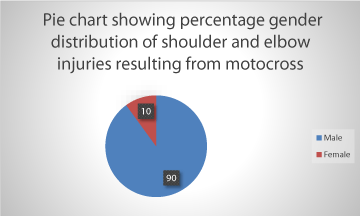
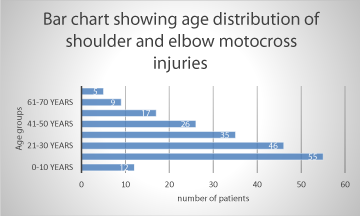
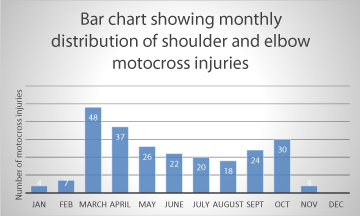
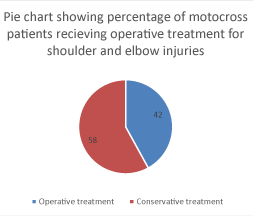
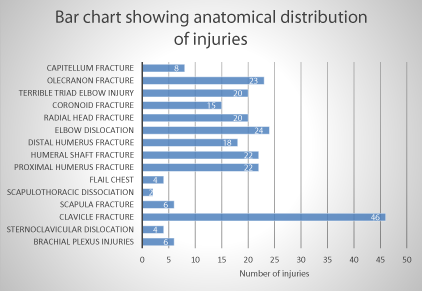
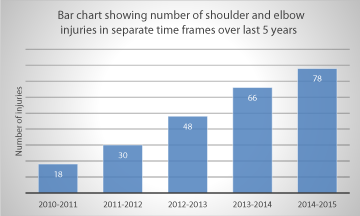
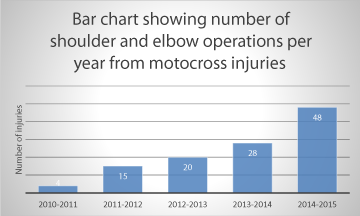

Sign up for Article Alerts